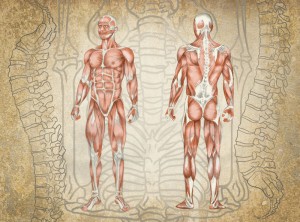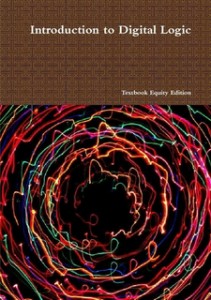Accounting Principles Vol1.pdf
Accounting Principles Vol2.pdf
These links are to the original CC-BY versions provided by Global Text Project of the University of Georgia in 2010.
Accounting Principles Vol1.pdf
Accounting Principles Vol2.pdf
These links are to the original CC-BY versions provided by Global Text Project of the University of Georgia in 2010.
 Textbook: Wilkin, “Human Biology” (2015)
Textbook: Wilkin, “Human Biology” (2015)
Download the free PDF (color, 28MB).
Authors
Douglas Wilkin, Ph.D.
Jean Brainard, Ph.D.
Please Say Thanks to the Authors for Creating this Open Licensed Textbook.
Click http://www.ck12.org/saythanks
(No sign in required)
This open licensed textbook is part of full series of anatomy and physiology content provided by ck12.org. Please support open education resources.
1.1 Organization of the Human Body
1.2 Homeostasis
1.3 Carcinogens and Cancer
1.4 Air Pollution and Illness
1.5 Bioterrorism
1.6 Human Skeletal System
1.7 Structure of Bones
1.8 Growth and Development of Bones
1.9 Skeletal System Joints
1.10 Skeletal System Problems and Diseases
1.11 Smooth, Skeletal, and Cardiac Muscles
1.12 Skeletal Muscles
1.13 Muscle Contraction
1.14 Skin
1.15 Nails and Hair
1.16 Nerve Cells
1.17 Nerve Impulses
1.18 Central Nervous System
1.19 Peripheral Nervous System
1.20 Senses
1.21 Drugs and the Nervous System
1.22 Nervous System Disorders
1.23 Glands
1.24 Hormones
1.25 Hormone Regulation
1.26 Endocrine System Disorders
1.27 Heart
1.28 Blood Vessels
1.29 Circulatory System
1.30 Circulatory System Diseases
1.31 Blood
1.32 Respiration
1.33 Respiratory System Organs
1.34 Processes of Breathing
1.35 Respiratory System Regulation
1.36 Respiratory System Diseases
1.37 Digestive System Organs
1.38 Digestion
1.39 Small Intestine
1.40 Large Intestine
1.41 Digestive System Diseases
1.42 Food and Nutrients
1.43 Balanced Eating
1.44 Excretion
1.45 Urinary System
1.46 Kidneys
1.47 Excretory System Diseases
1.48 Barriers to Pathogens
1.49 Inflammatory Response and Leukocytes
1.50 Lymphatic System
1.51 Humoral Immune Response
1.52 Cell-Mediated Immune Response
1.53 Immunity
1.54 Allergies
1.55 Autoimmune Diseases
1.56 Immunodeficiency
1.57 HIV and AIDS
1.58 Male Reproductive Structures
1.59 Male Reproductive Development
1.60 Human Sperm
1.61 Female Reproductive Structures
1.62 Female Reproductive Development
1.63 Human Egg Cells
1.64 Menstrual Cycle
1.65 Fertilization
1.66 Embryo Growth and Development
1.67 Fetus Growth and Development
1.68 Fetal Development and the Placenta
1.69 Pregnancy and Childbirth
1.70 Development from Birth to Adulthood
1.71 Adulthood and Aging
1.72 Sexually Transmitted Infections
1.73 Bacterial Sexually Transmitted Infections
1.74 Viral Sexually Transmitted Infections
1.75 References
Download the free PDF (color, 28MB).

This work is licensed under a Creative Commons Attribution-NonCommercial 4.0 International License.
Magnus, P.D., “paratodo x: Una Introducción a la Lógica Formal” (2015).
Philosophy Faculty Books. Book 4.
http://scholarsarchive.library.albany.edu/cas_philosophy_scholar_books/
University at Albany, State University of New York
Scholars Archive
Philosophy Faculty Books Philosophy
Summer 2015
paratodo x: Una Introducción a la Lógica Formal
P.D. Magnus
University at Albany, State University of New York, pmagnus@albany.edu
Follow
Dr. Paul Héroux, PhD
.
Principles of Toxicology (2013)
ISBN: 978-1-312-74790-6
License: CC BY-SA-NC
Toxicology studies the injurious effects of chemical and physical agents (including energy) on living organisms, observed as alterations in structure and function. The variety of injurious effects becomes apparent if we examine the major causes of death (Fl .I). Many of these diseases are caused or accelerated by exposure to toxic substances. Toxicity data from various bio-medical sciences document the effects of exposure to natural• or artificial agents.
Purchase Print* Version $49.95 (grayscale, 324 pages) Compare at $117 on Amazon.com
Download free PDF* (Print version) (grayscale, 324 pages)
Download original free color PDF (Full color, 324 pages, 39 MB)
Author’s Toxicology Laboratory Website
*Errata Page 5-11 contains an incorrect formula, except in the full color pdf. Replace it with this one (pdf, 154K): 5-11 Replacement Page
1. Scope of Toxicology
2. Risk Assessment
3. Targets and Bio-Transformation
4. Toxicokinetics
5. Hemato- and Vascular Toxicity
6. Dermatotoxicity
7. Neurotoxicity
8. Hepatotoxicity
9. Nephrotoxicity
10. Techniques In Vivo & In Vitro
11 . Pulmonary Toxicity
12. Reproductive Toxicity
13. Geno toxicity
14. Carcinogenicity
*Photo Source: (CC BY-SA 2.5 http://en.wikipedia.org/wiki/Hep_G2#mediaviewer/File:HepG2.jpg)
Seifert and Sutton, Educational Psychology (2009)
From the authors, “All in all, we hope that you find Educational Psychology a useful and accessible part of your education. If you are preparing to be a teacher, good luck with your studies and your future! If you are an instructor, good luck with helping your students learn about this subject!”
Purchase print copy $49.95 (365 pages, 12 chapters, see table of contents below)
Download Free PDF (color, 4 Mb, 365 pages).
Original Source: Global Text Project
Nievergelt, “Algorithms and Data Structures – With Applications to Graphics and Geometry” (2011)
An Open Textbook by Jurg Nievergelt and Klaus Hinrichs
“An introductory coverage of algorithms and data structures with application to graphics and geometry.”
This textbook, released under a Creative Commons Share Alike (CC BY SA) license, is presented in its original format with the academic content unchanged. It was authored by Jurg Nievergelt (ETH Zurich) and Klaus Hinrichs (Institut für Informatik) and provided by the University of Georgia’s Global Textbook Project.
Photo Credit: Renato Keshet (GFDL) commons.wikimedia.org
Buy Print Copy $39.99 (371 pages, paperback, B&W)
Free PDF Download (5.5 Mb)
Table of Contents
Reducing a task to given primitives: programming motion
A robot car, its capabilities, and the task to be performed
Wall-following algorithm described informally
Algorithm specified in a high-level language
Algorithm programmed in the robot’s language
The robot’s program optimized
Graphics primitives and environments
Turtle graphics: a basic environment
QuickDraw: a graphics toolbox
A graphics frame program
Algorithm animation
Computer-driven visualization: characteristics and techniques
A gallery of algorithm snapshots
Algorithms and programs as literature: substance and form
Programming in the large versus programming in the small
Documentation versus literature: is it meant to be read?
Pascal and its dialects: lingua franca of computer science
Divide-and-conquer and recursion
An algorithmic principle
Divide-and-conquer expressed as a diagram: merge sort
Recursively defined trees
Recursive tree traversal
Recursion versus iteration: the Tower of Hanoi
The flag of Alfanumerica: an algorithmic novel on iteration and recursion
Syntax
Syntax and semantics
Grammars and their representation: syntax diagrams and EBNF
An overly simple syntax for simple expressions
Parenthesis-free notation for arithmetic expressions
Syntax analysis
The role of syntax analysis
Syntax analysis of parenthesis-free expressions by counting
Analysis by recursive descent
Turning syntax diagrams into a parser
Truth values, the data type ‘set’, and bit acrobatics
Bits and boolean functions
Swapping and crossovers: the versatile exclusive-or
The bit sum or “population count”
Ordered sets
Sequential search
Binary search
In-place permutation
Strings
Recognizing a pattern consisting of a single string
Paths in a graph
Boolean matrix multiplication
Warshall’s algorithm
Minimum spanning tree in a graph
Integers
Operations on integers
The Euclidean algorithm
The prime number sieve of Eratosthenes
Large integers
Modular number systems: the poor man’s large integers
Random numbers
Reals
Floating-point numbers
Some dangers
Horner’s method
Bisection
Newton’s method for computing the square root
Straight lines and circles
Intersection
Clipping
Drawing digitized lines
The riddle of the braiding straight lines
Digitized circles
Computability and complexity
Models of computation: the ultimate RISC
Almost nothing is computable
The halting problem is undecidable
Computable, yet unknown
Multiplication of complex numbers
Complexity of matrix multiplication
The mathematics of algorithm analysis
Growth rates and orders of magnitude
Asymptotics
Summation formulas
Recurrence relations
Asymptotic performance of divide-and-conquer algorithms
Permutations
Trees
Sorting and its complexity
What is sorting? How difficult is it?
Types of sorting algorithms
Simple sorting algorithms that work in time T(n)
A lower bound O(n · log n)
Quicksort
Analysis for three cases: best, “typical”, and worst
Is it possible to sort in linear time?
Sorting networks
What is a data structure?
Data structures old and new
The range of data structures studied
Performance criteria and measures
Abstract data types
Concepts: What and why?
Stack
First-in-first-out queue
Priority queue
Dictionary
Implicit data structures
What is an implicit data structure?
Array storage
Implementation of the fixed-length fifo queue as a circular buffer
Implementation of the fixed-length priority queue as a heap
Heapsort
List structures
Lists, memory management, pointer variables
The fifo queue implemented as a one-way list
Tree traversal
Binary search trees
Height-balanced trees
Address computation
Concepts and terminology
The special case of small key domains
The special case of perfect hashing: table contents known a priori
Conventional hash tables: collision resolution
Choice of hash function: randomization
Performance analysis
Extendible hashing
A virtual radix tree: order-preserving extendible hashing
Metric data structures
Organizing the embedding space versus organizing its contents
Radix trees, tries
Quadtrees and octtrees
Spatial data structures: objectives and constraints
The grid file
Simple geometric objects and their parameter spaces
Region queries of arbitrary shape
Evaluating region queries with a grid file
Interaction between query processing and data access
Sample problems and algorithms
Geometry and geometric computation
Convex hull: a multitude of algorithms
The uses of convexity: basic operations on polygons
Visibility in the plane: a simple algorithm whose analysis is not
Plane-sweep: a general-purpose algorithm for two-dimensional problems illustrated using line segment intersection
The line segment intersection test
The skeleton: Turning a space dimension into a time dimension
Data structures
Updating the y-table and detecting an intersection
Sweeping across intersections
Degenerate configurations, numerical errors, robustness
The closest pair
The problem
Plane-sweep applied to the closest pair problem
Implementation
Analysis
Sweeping in three or more dimensions

James Feher,”Introduction to Digital Logic” with Laboratory Exercises (2010)
This lab manual provides an introduction to digital logic, starting with simple gates and building up to state machines. Students should have a solid understanding of algebra as well as a rudimentary understanding of basic electricity including voltage, current, resistance, capacitance, inductance and how they relate to direct current circuits.
Buy Print Format $23.49 (99 pages, B&W)
ISBN 978-1-312-50167-6
Download Free PDF (100 pages, color, 3.2 Mb)
The transistor
The breadboard
The inverter
History of logic chips
Logic symbols
Logical functions
De Morgan’s laws
Karnaugh maps
Circuit design, construction and debugging
Additional K-map groupings
Input placement on K-map
Don’t care conditions
Background on the “mux”
Using a multiplexer to implement logical functions
Timing in digital circuits
555 timer
Timers
Clocks
Timing diagrams
Memory
SR latch
Flip-flops
What is a state machine?
State transition diagrams
State machine design
Debounced switches
How many bits of memory does a state machine need?
What are unused states?
Appendix A: Chip pinouts
Appendix B: Resistors and capacitors
Resistors
Capacitors
Appendix C: Lab notebook
Appendix F: Solutions
Chapter 1 review exercises
Chapter 2 review exercises
Chapter 3 review exercises
Chapter 4 review exercises
Chapter 5 review exercises
Chapter 6 review exercises
Chapter 7 review exercises
Chapter 8 review exercises
Chapter 9 review exercises

By Catherine Schmidt-Jones
Explanations (suitable for any age) of the basic elements of music, with suggested activities for introducing the each concept to children at early elementary school level. The course may be used by instructors not trained in music; all necessary definitions and explanations are included. – From the book
Textbook Equity Edition
ISBN: 978-1-312-48694-2
License CC BY-SA
Buy Print $19.95 + s&h, tax
Download Free PDF (107 pages, 2.7 MB) (registration not required)
Explanations (suitable for any age) of the basic elements of music, with suggested activities for introducing the each concept to children at early elementary school level. The course may be used by instructors not trained in music; all necessary definitions and explanations are included. – From the book
This music textbook, authored by Catherine Schmidt-Jones, is released under a Creative Commons Attribution Share-Alike license, published by Textbook Equity without changes to the academic content. https://www.textbookequity.org/category/music/
1 Time Elements
1.1 Rhythm
1.2 Simple Rhythm Activities
1.3 Meter in Music
1.4 Musical Meter Activities
1.7 Dynamics and Accents in Music
1.8 A Musical Dynamics Activity
1.9 A Musical Accent Activity
Solutions
2 Pitch Elements
2.1 Timbre
2.2 Melody
2.3 Harmony
Solutions
3 Combining Time and Pitch
3.1 The Textures of Music
3.2 A Musical Textures Activity
3.3 An Introduction to Counterpoint
3.4 Counterpoint Activities: Listening and Discussion
3.6 Music Form Activities
3.7 Form in Music
Solutions
Index
Attributions
accents
accompaniment
activity
allegro
andante
antecedent
arpeggiated
arpeggiated chords
arpeggios
attack
bar
bass line
beat
block chords
borrowed division
bridge
broken
cadence
canon
cell
cells
chord progression
chordal
chords chorus
chromatic
clause
color
compose
composition
compound
conjunct
conjunct motion
consequent
contour
contrapuntal
countermelody
counterpoint
countersubject
descant
diatonic
disjunct
disjunct motion
dissonance
drone
drones
duple
dynamics
figure
embellishments
English
form
forte
fugue
functional harmony
grammar
grave
harmonic rhythm
harmonics
harmony
heterophonic
heterophony
homophonic
homophony
homorhythmic
implied harmony
improvisation
improvise
inner parts
inner voices
instruments
language
language arts
larghetto
largo
legato
leitmotif
lento
lesson plan
measure
Measure or bar
melodic
melodic contour
melodic line
melodic phrase
melodic shape
melody
meter
metronome
monody
monophonic
monophony
motif
motiv
motive
movements
movie music
movie score
music
musical instruments
national art standard
national dance standard
national English standard
national music standard
on the beat
on the downbeat
opera
orchestra
ornaments
ostinato
parallel
parallel harmony
percussion
phrase
piano
polyphonic
polyphonic texture
polyphony
presto
quadruple
refrain
rhythm
rhythm section
rondo
round
rounds
scalar
sentence shape
simple
staccato
step-wise
strophe
subject
symphony
Syncopation
tempo
texture
theme
themes
timbre
time signature
tone
tone quality
triple
upbeat
verse
vivace voices

“College Biology -Chapter Summaries, Learning Exercises & Answers” (2014)
This useful publication contains the learning exercises, answers, and glossary of “College Biology” Volumes 1 – 3.
Buy Printed Version $19.99 USD (Black & White, 263 pages)
ISBN: 978-1-312-45149-0
Download PDF (free, color, 263 pages, 22 Mb)
Contents
This textbook is designed as a quick reference for “College Biology” volumes one through three. It contains the “Chapter Summary”, “Art Connection”, “Review”, and “Critical Thinking” Exercises found in each of the three volumes. It also contains the COMPLETE alphabetical listing of the key terms. “College Biology”, intended for capable college students, is adapted from OpenStax College’s open (CC BY) textbook “Biology”. It is Textbook Equity’s derivative to ensure continued free and open access, and to provide low cost print formats. For manageability and economy, Textbook Equity created three volumes from the original that closely match typical semester or quarter biology curriculum. No academic content was changed from the original. See textbookequity.org/tbq_biology This supplement covers all 47 chapters.
 Mathematical Analysis Vol 1 (2011)
Mathematical Analysis Vol 1 (2011)
A top quality open textbook for advanced undergraduates and graduate students.
A complementary textbook to Saylor Academy’s Free Online Math 241 course.
Purchase Print $28.92, 365 pages. Softcover, black and white.
Download free pdf, 4mb, 385 pages.
* “Starred” sections may be omitted by beginners.
1–3. Sets and Operations on Sets. Quantifiers 1
Problems in Set Theory 6
4–7. Relations. Mappings 8
Problems on Relations and Mappings 14
8. Sequences 15
9. Some Theorems on Countable Sets 18
Problems on Countable and Uncountable Sets 21
1–4. Axioms and Basic Definitions 23
5–6. Natural Numbers. Induction 27
Problems on Natural Numbers and Induction 32
7. Integers and Rationals 34
8–9. Upper and Lower Bounds. Completeness 36
Problems on Upper and Lower Bounds 40
10. Some Consequences of the Completeness Axiom 43
11–12. Powers With Arbitrary Real Exponents. Irrationals 46
Problems on Roots, Powers, and Irrationals 50
13. The Infinities. Upper and Lower Limits of Sequences 53
Problems on Upper and Lower Limits of Sequences in E* 60
1–3. The Euclidean n-space, En 63
Problems on Vectors in En 69
4–6. Lines and Planes in En 71
Problems on Lines and Planes in En 75
7. Intervals in En 76
Problems on Intervals in En 79
8. Complex Numbers 80
Problems on Complex Numbers 83
*9. Vector Spaces. The Space Cn. Euclidean Spaces 85
Problems on Linear Spaces 89
*10. Normed Linear Spaces 90
Problems on Normed Linear Spaces 93
11. Metric Spaces 95
Problems on Metric Spaces 98
12. Open and Closed Sets. Neighborhoods 101
Problems on Neighborhoods, Open and Closed Sets 106
13. Bounded Sets. Diameters 108
Problems on Boundedness and Diameters 112
14. Cluster Points. Convergent Sequences 114
Problems on Cluster Points and Convergence 118
15. Operations on Convergent Sequences 120
Problems on Limits of Sequences 123
16. More on Cluster Points and Closed Sets. Density 135
Problems on Cluster Points, Closed Sets, and Density 139
17. Cauchy Sequences. Completeness 141
Problems on Cauchy Sequences 144
1. Basic Definitions 149
Problems on Limits and Continuity 157
2. Some General Theorems on Limits and Continuity 161
More Problems on Limits and Continuity 166
3. Operations on Limits. Rational Functions 170
Problems on Continuity of Vector-Valued Functions 174
4. Infinite Limits. Operations in E* 177
Problems on Limits and Operations in E* 180
5. Monotone Functions 181
Problems on Monotone Functions 185
6. Compact Sets 186
Problems on Compact Sets 189
*7. More on Compactness 192
8. Continuity on Compact Sets. Uniform Continuity 194
Problems on Uniform Continuity; Continuity on Compact Sets. 200
9. The Intermediate Value Property 203
Problems on the Darboux Property and Related Topics 209
10. Arcs and Curves. Connected Sets 211
Problems on Arcs, Curves, and Connected Sets 215
*11. Product Spaces. Double and Iterated Limits 218
*Problems on Double Limits and Product Spaces 224
12. Sequences and Series of Functions 227
Problems on Sequences and Series of Functions 233
13. Absolutely Convergent Series. Power Series 237
More Problems on Series of Functions 245
1. Derivatives of Functions of One Real Variable 251
Problems on Derived Functions in One Variable 257
2. Derivatives of Extended-Real Functions 259
Problems on Derivatives of Extended-Real Functions 265
3. L’Hˆopital’s Rule 266
Problems on L’Hˆopital’s Rule 269
4. Complex and Vector-Valued Functions on E1 271
Problems on Complex and Vector-Valued Functions on E1 275
5. Antiderivatives (Primitives, Integrals) 278
Problems on Antiderivatives 285
6. Differentials. Taylor’s Theorem and Taylor’s Series 288
Problems on Taylor’s Theorem 296
7. The Total Variation (Length) of a Function f : E1 ? E 300
Problems on Total Variation and Graph Length 306
8. Rectifiable Arcs. Absolute Continuity 308
Problems on Absolute Continuity and Rectifiable Arcs 314
9. Convergence Theorems in Differentiation and Integration 314
Problems on Convergence in Differentiation and Integration 321
10. Sufficient Condition of Integrability. Regulated Functions 322
Problems on Regulated Functions 329
11. Integral Definitions of Some Functions 331
Problems on Exponential and Trigonometric Functions 338